
Stephen C. Shadegg Papers/Greater Arizona Collection/Arizona State University Library

Audio By Carbonatix
Downtown Phoenix has come a long way, baby.
More than 130 years ago, the Phoenix skyline featured barely any buildings taller than a few stories. Glancing at old photos, only the surrounding mountains look familiar.
But as the population of Phoenix grew – from roughly 100,000 in 1950 to about 1.6 million people today – so has the look of downtown. Though some remain, many older stone and brick buildings were razed and replaced by taller and taller skyscrapers. Two major sports facilities, PHX Arena and Chase Field, were constructed.
With construction cranes dotting the downtown landscape, expect the complexion of the city’s center to look even more different a few years from now. Until then, take a walk through history with these photos of the Phoenix skyline through the decades.
This year, make your gift count –
Invest in local news that matters.
Our work is funded by readers like you who make voluntary gifts because they value our work and want to see it continue. Make a contribution today to help us reach our $30,000 goal!
1800s
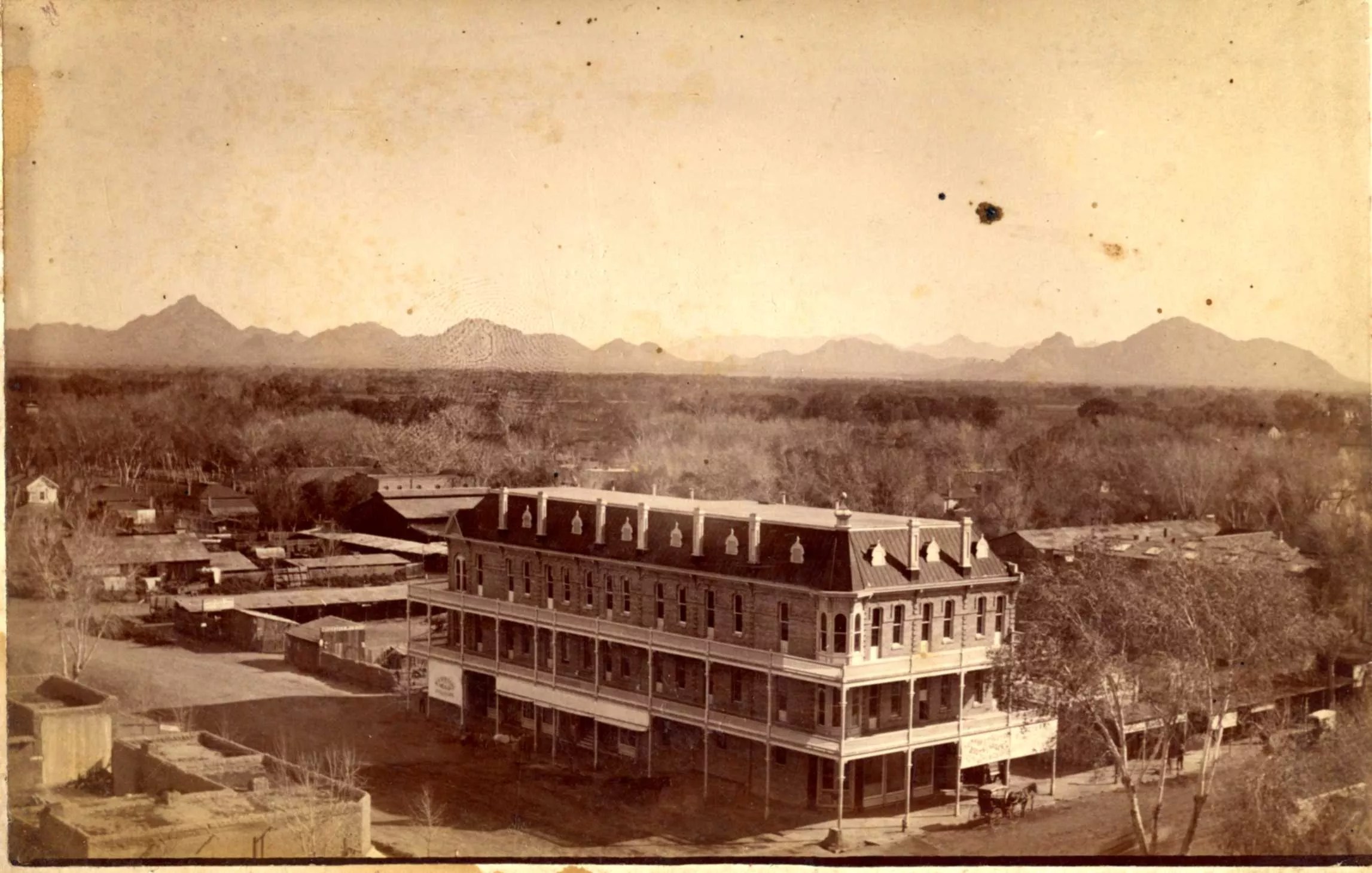
The Monihon Building at First Avenue and Washington Street in Phoenix was built in 1889.
Tempe History Museum
It’s not clear when this photo of the Monihon Building was taken, but it was built in 1889 on the northeast corner of First Avenue and Washington Street. It was constructed by James D. Monihon, an Arizona pioneer. That corner is now home to the Renaissance Square skyscraper. A military parade in Phoenix in 1888. Courtesy National Archives, photo no. 48-RST-4B-15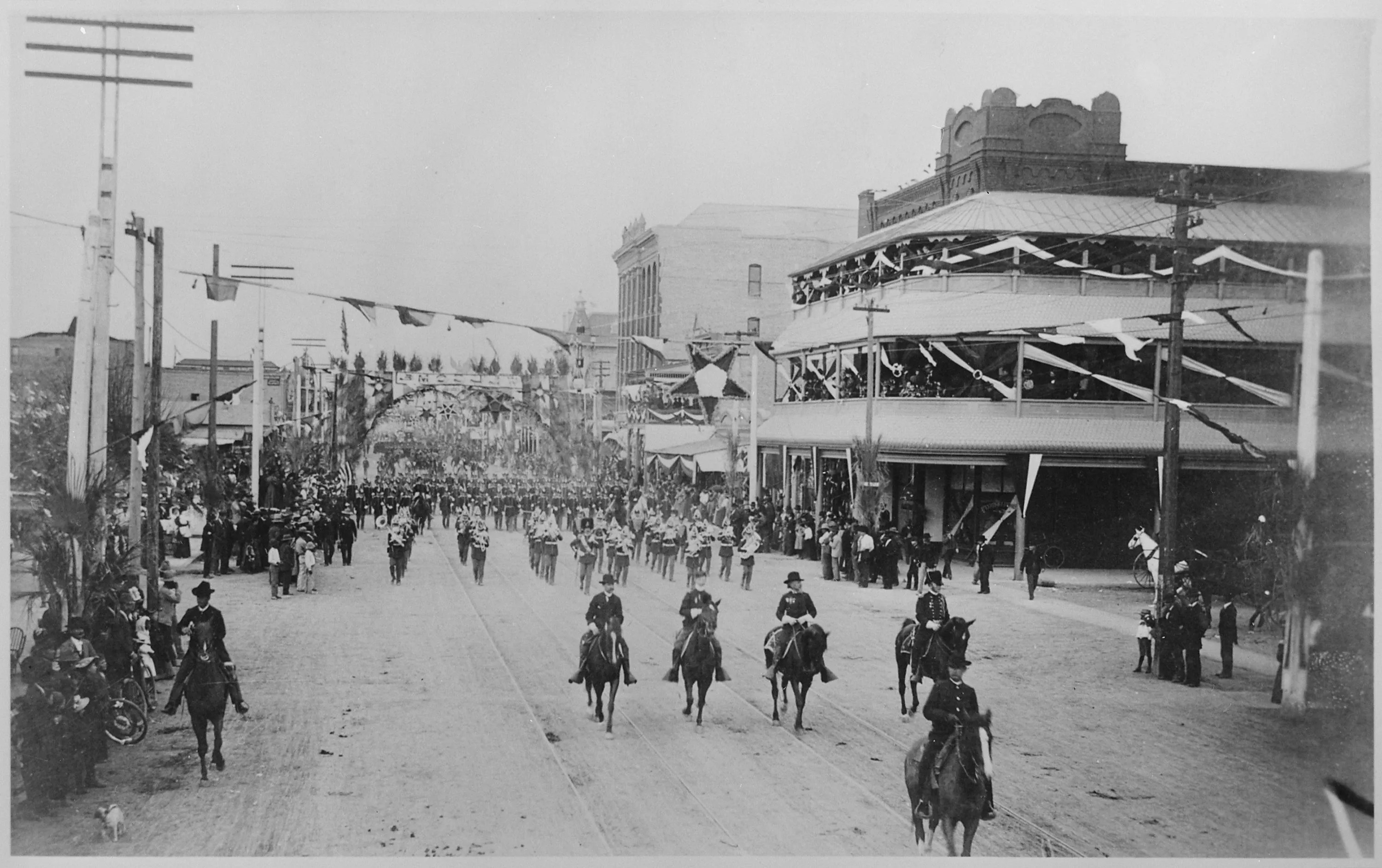
A military parade heads down a Phoenix street – though it’s not clear which one – in 1888. At this point, the city’s population was about 3,000.
1900s
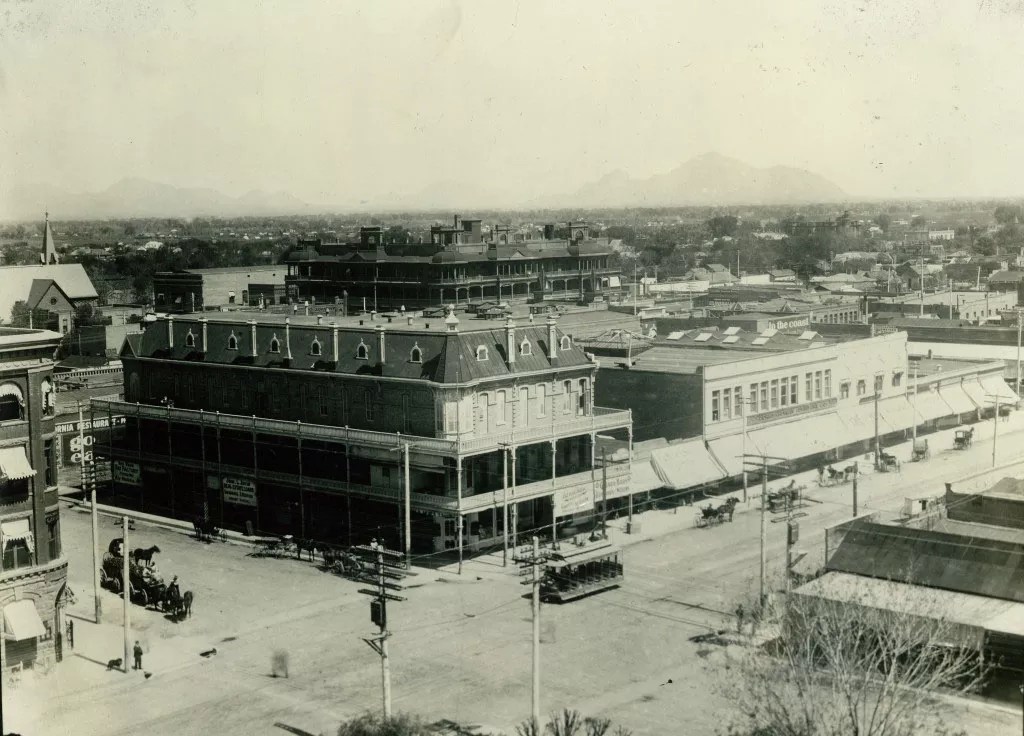
The Monihon Building in Phoenix around 1900.
Stephen C. Shadegg Papers/Greater Arizona Collection/Arizona State University Library
A lot has changed around the Monihon Building in this photo, taken sometime around 1900. More structures have risen around it, and a streetcar trolls along in front. But good ol’ Camelback Mountain sits unchanged in the distance.
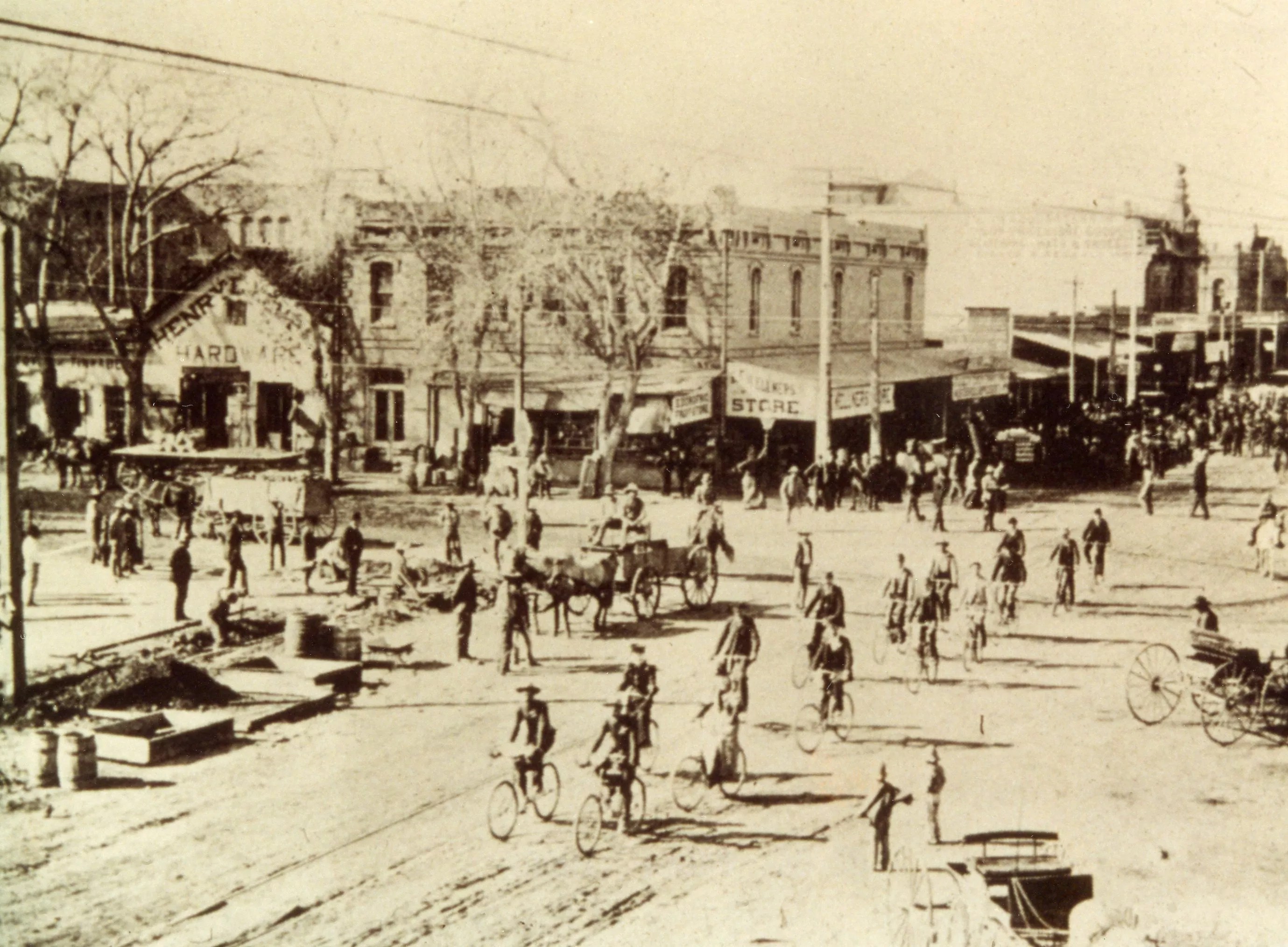
Bicycle riders and a horse-drawn carriage roll down a Phoenix street in the 1900s.
Mesa Historical Museum
Nary a motor vehicle to be seen in this 1900s photo of a Phoenix street. Just bicycle riders and a horse-drawn carriage. Washington Street in Phoenix in 1905. Mesa Historical Museum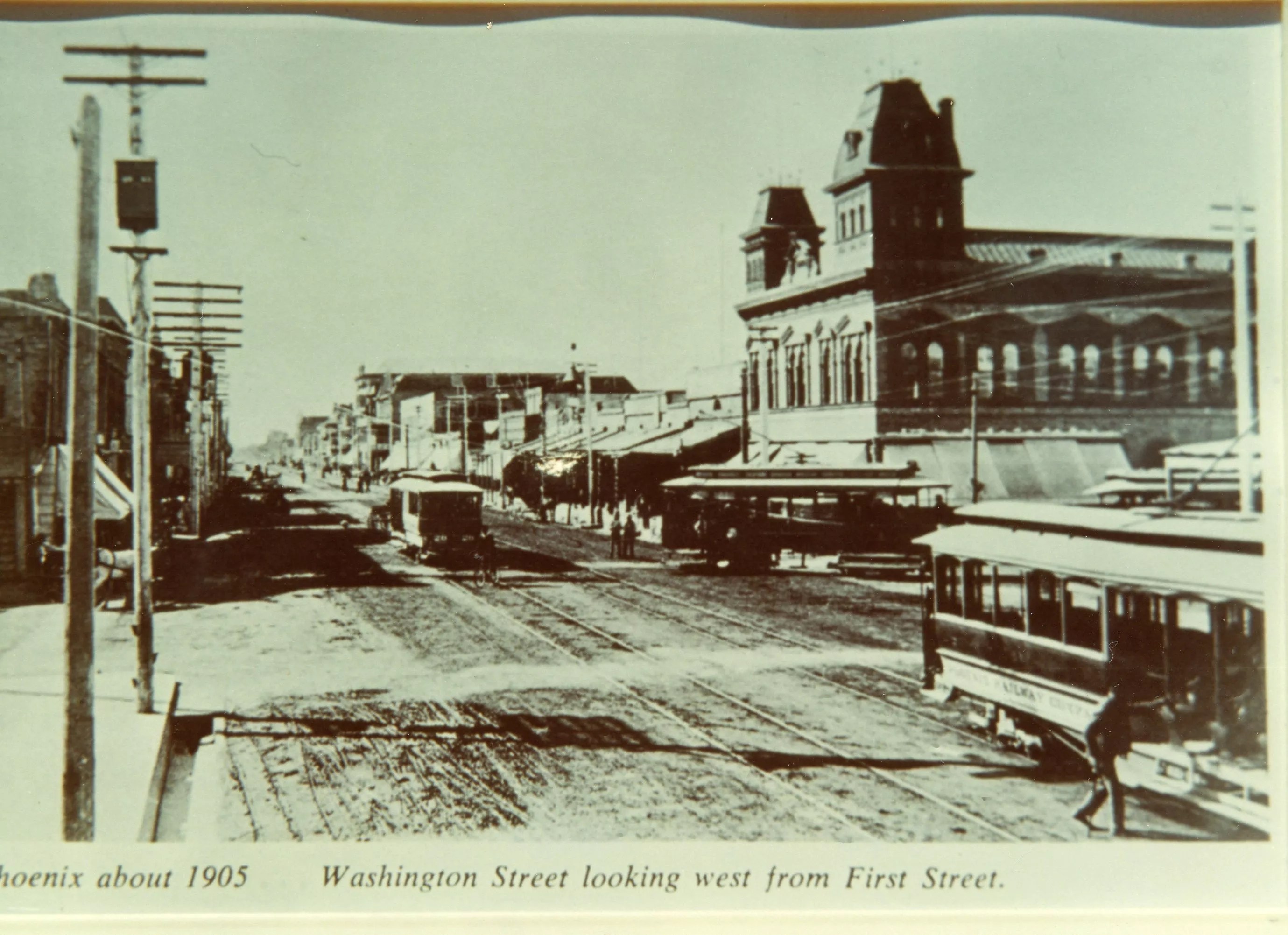
This photo from 1905 shows Washington Street looking west from First Street. You can see the Monihon Building on the right in the distance, while streetcars move up and down the street.
1920s
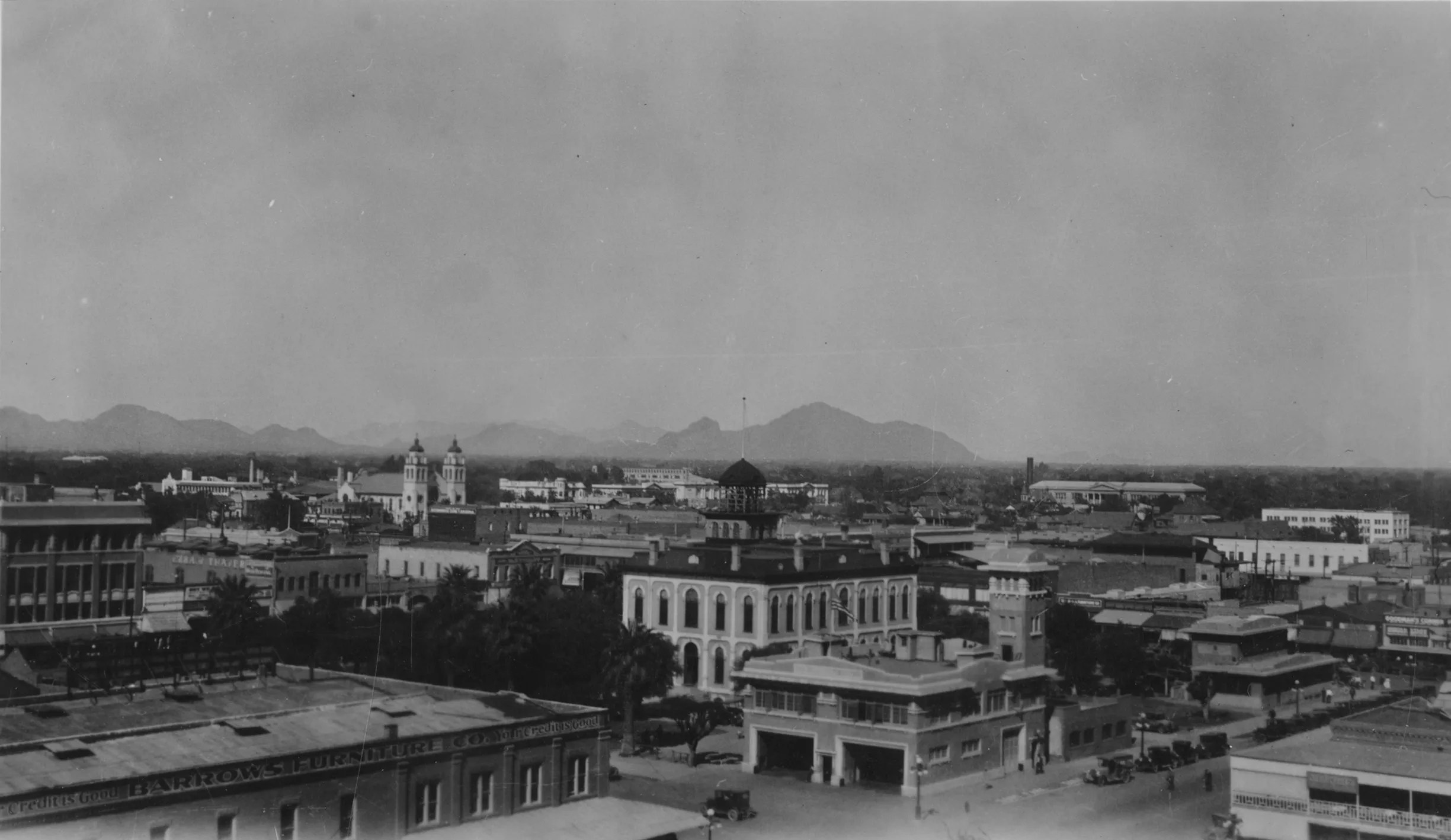
Phoenix in the 1920s.
Arizona Historical Society/Tucson General Photo Collection/TU PC 1000/Places-Phoenix-General/100328
We’ve got cars! In this 1920s photo, we also see the familiar spires of St. Mary’s Basilica, completed in 1914. It still stands on the corner of Monroe and Third streets.
1930s
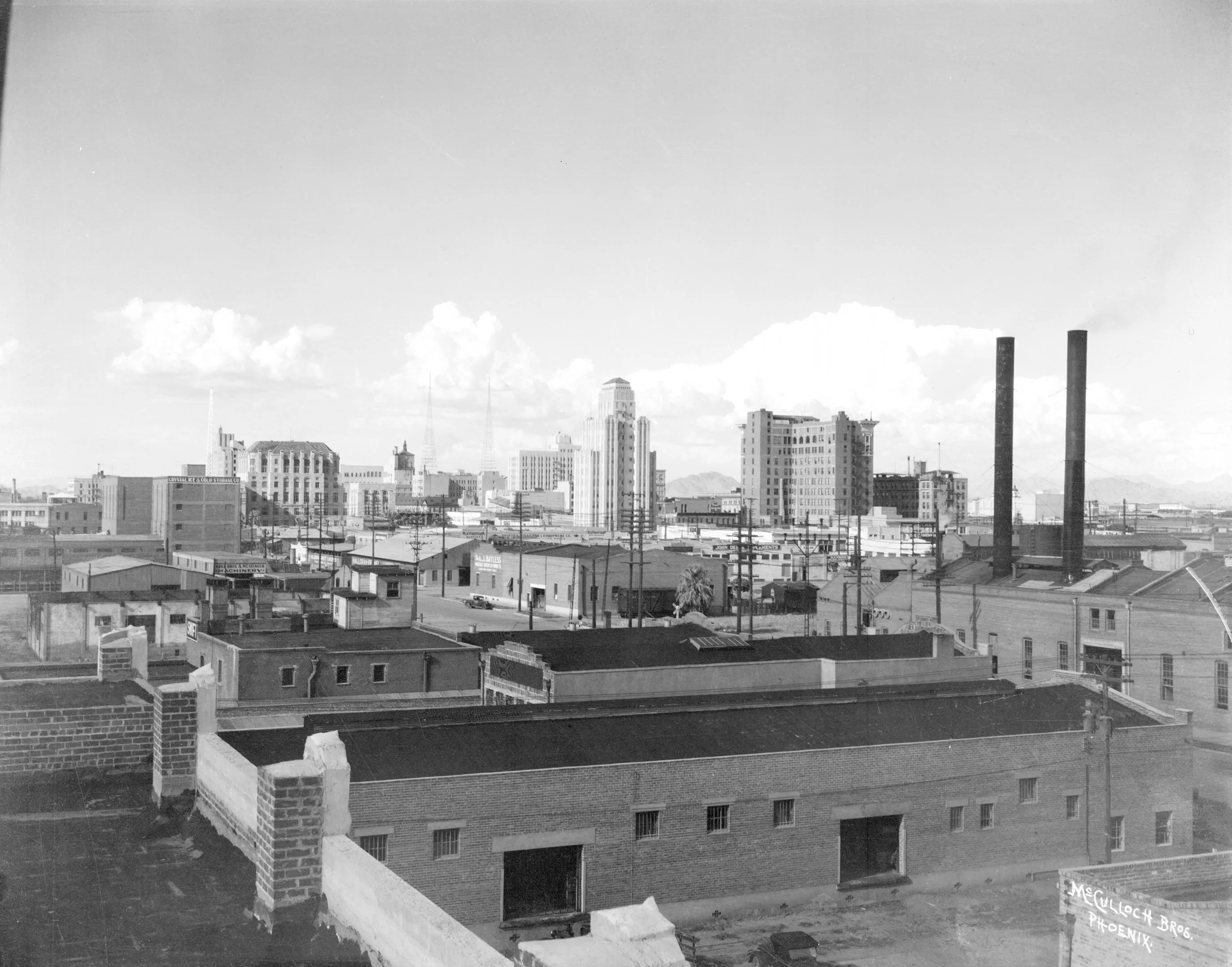
Phoenix in 1933.
McCulloch Brothers Photographs/Herb and Dorothy McLaughlin Collection/Greater Arizona Collection/Arizona State University Library
This 1933 photo offers glimpses of the Professional Building (to left of the smokestacks) and Luhrs Tower right next to that. Built in 1932 and located at 15 E. Monroe St., the Professional Building used to host Valley Bank and Trust, which later became Valley National Bank. You’ll see it again in these photos, with a prominent sign on top. It’s now a Hilton Garden Inn.
Luhrs Tower, built in 1929 at 11 W. Jefferson St., now features Bitter & Twisted Cocktail Parlour and Monroe’s Hot Chicken on the ground floor.
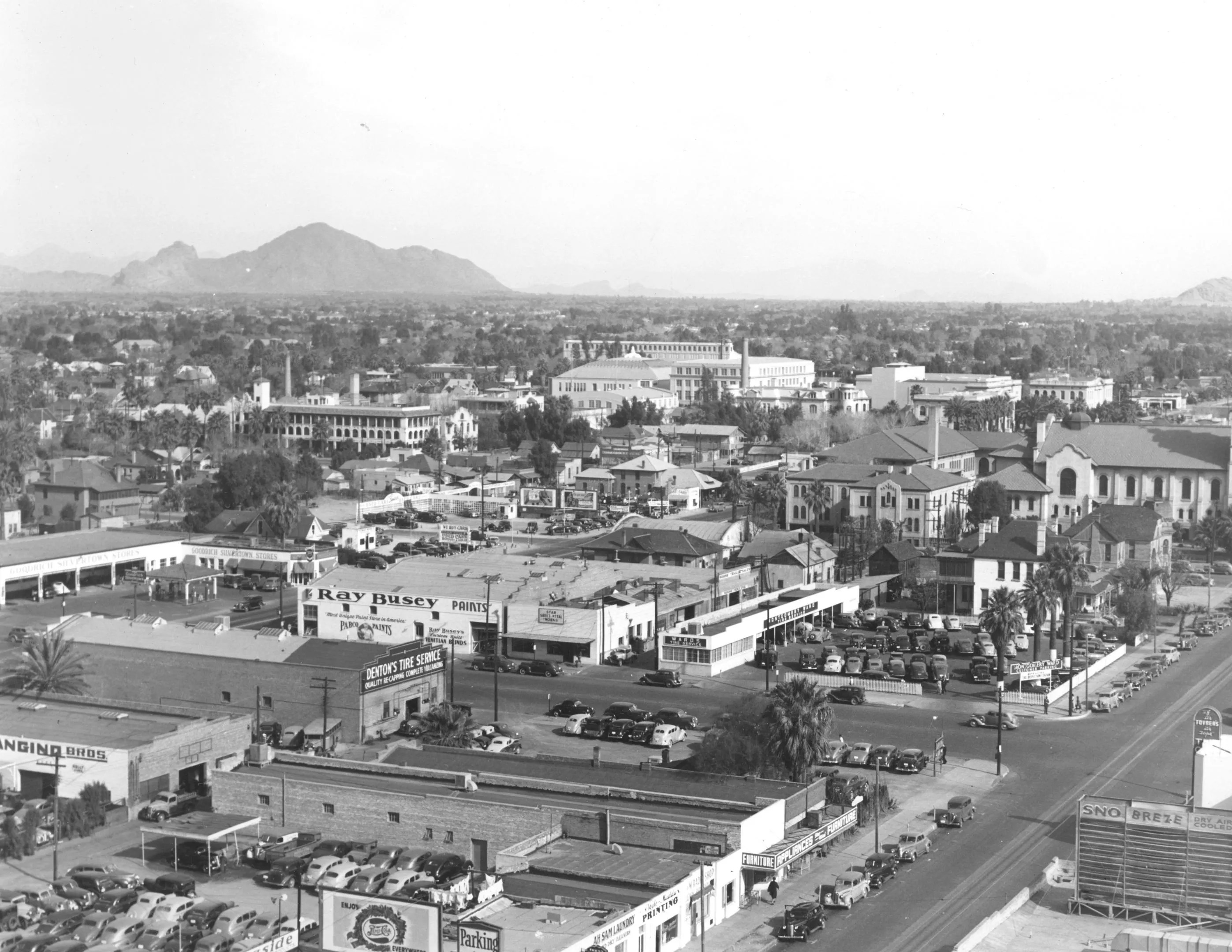
Phoenix in 1935 photo.
Arizona State Archives
Of note in this 1935 photo: Ray Busey Paints, located at Second and Van Buren streets. Busey was an important civic figure in Phoenix, going on to serve as mayor from 1946 to 1947.
1940s
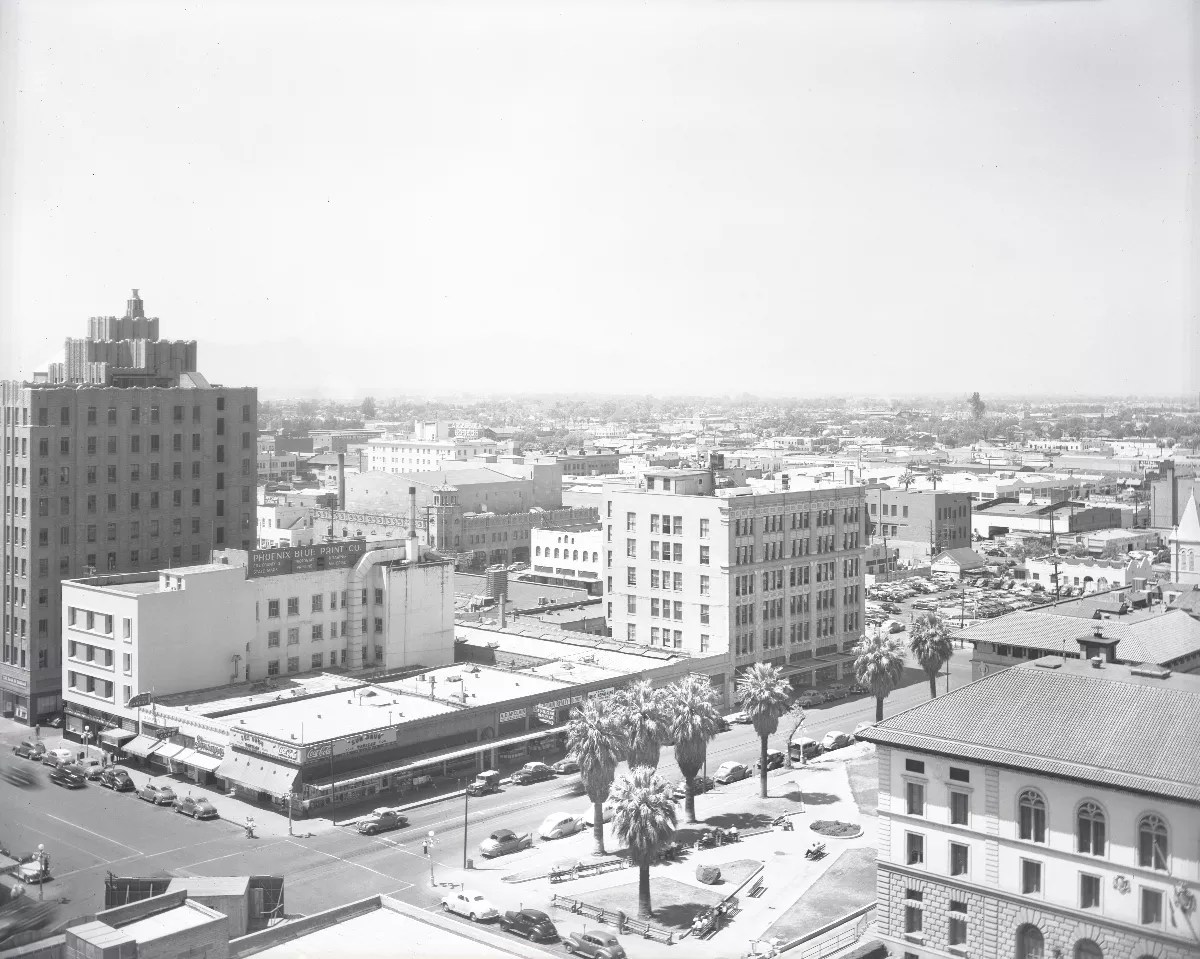
Phoenix in 1946.
McCulloch Brothers Photographs/Herb and Dorothy McLaughlin Collection/Greater Arizona Collection/Arizona State University Library
This 1946 photo shows the intersection of Monroe Street and First Avenue. On the right, sitting across from the row of palm trees, is the Ellis Building, constructed in 1922. It’s still there, although it was given a modern facelift in the 1960s. On the far left, sitting up First Avenue, is the Title and Trust Building, built in 1930. The opening sequence of ”Psycho” was filmed from its roof. It’s now filled with condominiums.
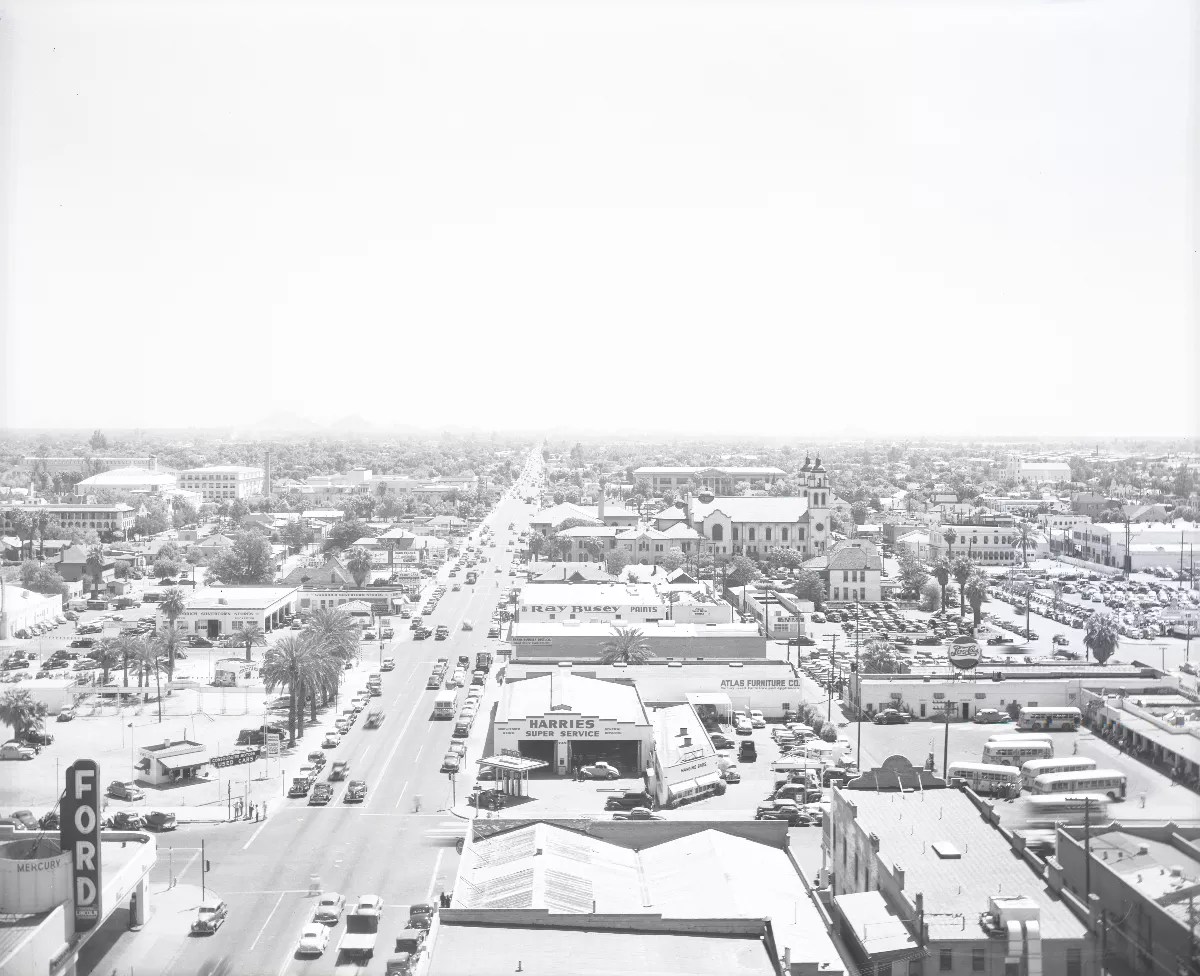
Phoenix in 1946.
McCulloch Brothers Photographs/Herb and Dorothy McLaughlin Collection/Greater Arizona Collection/Arizona State University Library
This 1946 photo shows an eastward view of Van Buren Street. Both the Ray Busey Paints building and St. Mary’s Basilica can be seen. But also note how short the palm trees are compared with their height today.
1950s

Phoenix circa 1950.
Stephen C. Shadegg Papers/Greater Arizona Collection/Arizona State University Library
This photo was taken sometime around 1950, and look how the city has expanded. Many older buildings can be found – St. Mary’s Basilica, the Title and Trust Building, Luhrs Tower. But this wider view also gives us a glimpse of the Westward Ho building on the far left of the frame. Phoenix in 1950. Arizona State Archives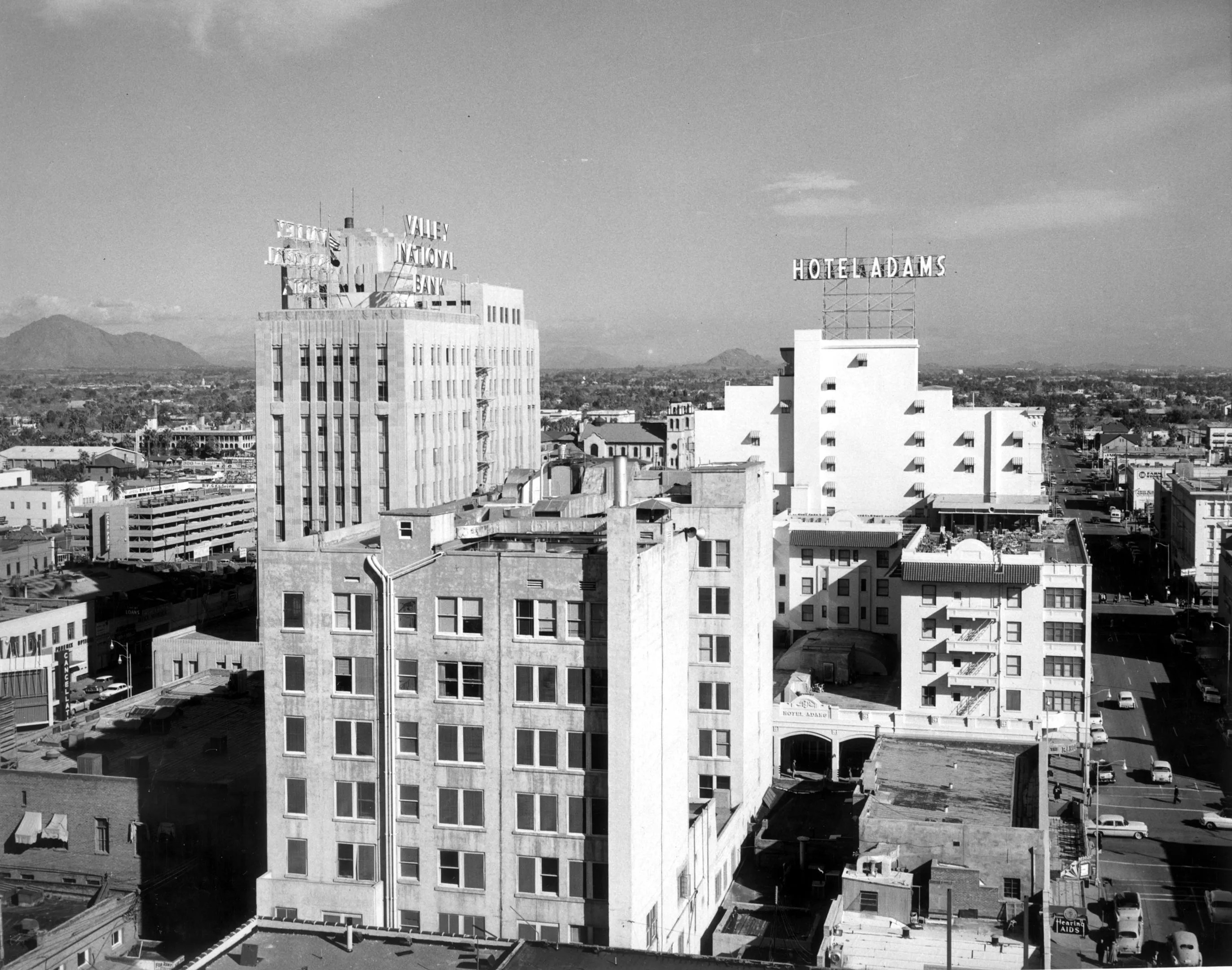
Also taken in 1950, this photo shows the Professional Building – see the Valley National Bank sign now on the roof – as well as the Hotel Adams, which was torn down and rebuilt in 1973. It’s now the Renaissance Phoenix Downtown Hotel.
1960s

Phoenix in 1965.
Stephen C. Shadegg Papers/Greater Arizona Collection/Arizona State University Library
Compare this shot, taken in 1965, with the shot two photos above. Phoenix is starting to take on a more modern look. One older structure sticks out, though: the old City Hall and Maricopa County Courthouse on Jefferson Street. Built in 1929, it still sits there today, although City Hall and many courthouse functions have relocated to more modern homes. Phoenix in 1969. Stephen C. Shadegg Papers/Greater Arizona Collection/Arizona State University Library
This photo, taken in 1969, shows the Westward Ho as well as the First National Bank of Arizona, the light-colored building with lettering on top in the center of the frame. That building now houses Arizona State University’s downtown University Center.
1970s
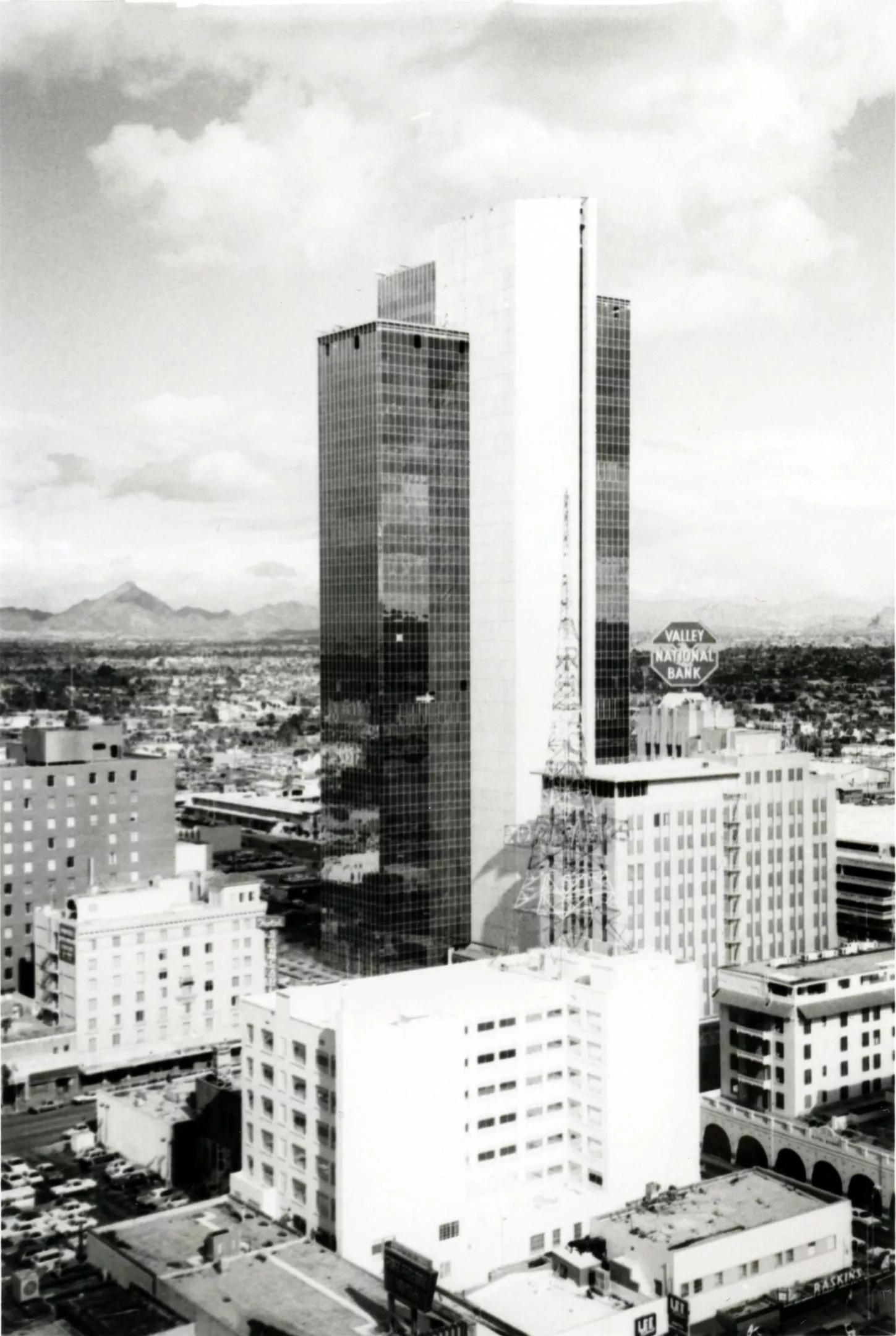
Phoenix in 1973.
Arizona State Archives
In this 1973 photo, you can see the Valley National Bank building – now with rotating sign – next to a brand-new glass facade tower constructed the year before. Initially owned by Valley National Bank, the structure was renamed Chase Tower – as we know it today – following a series of corporate takeovers and mergers.
1980s
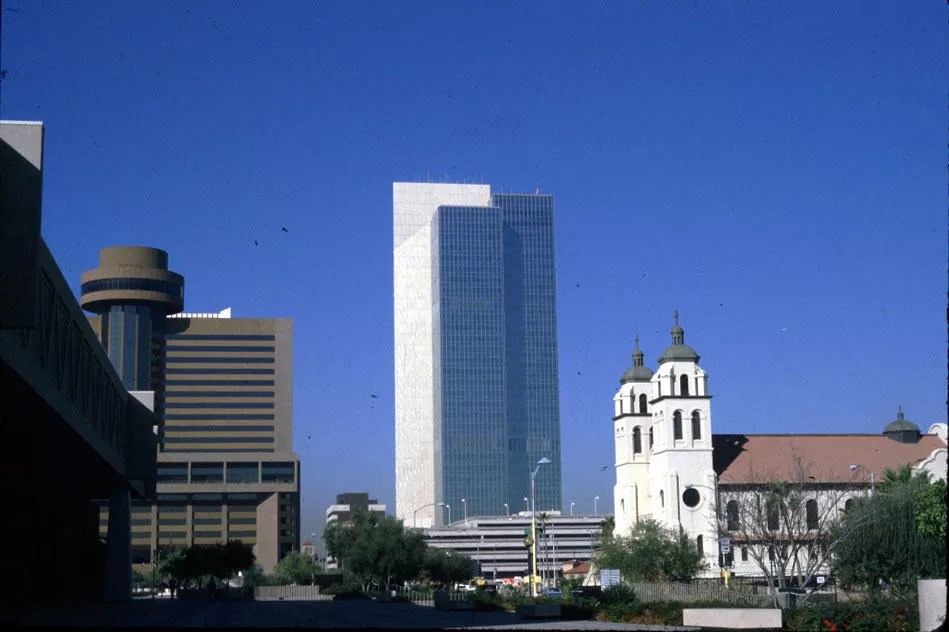
Phoenix in 1985.
Tempe History Museum
Whoa, color photos! In this 1985 shot, Chase Tower is framed on the right by St. Mary’s Basilica and on the left by the Hyatt Regency Hotel, which was completed in 1976. A military flyover of downtown Phoenix in 1987. Courtesy National Archives, photo no. 330-CFD-DF-ST-99-06066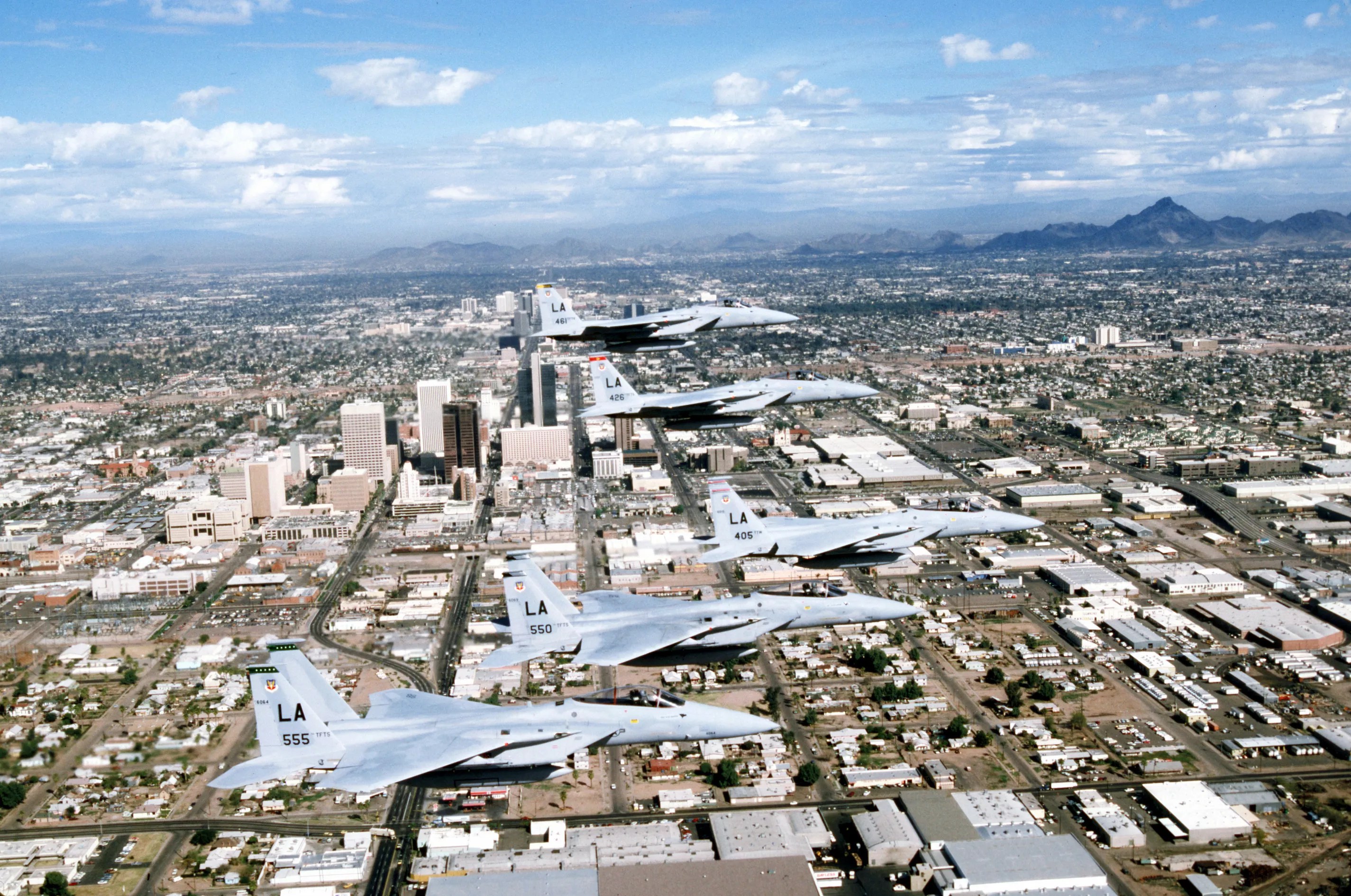
In 1987, five F-15 Eagle fighters fly over downtown Phoenix. See those nondescript buildings right next to where Seventh Street leaps over the railroad tracks? A decade later, they’d be replaced by Chase Field.
1990s
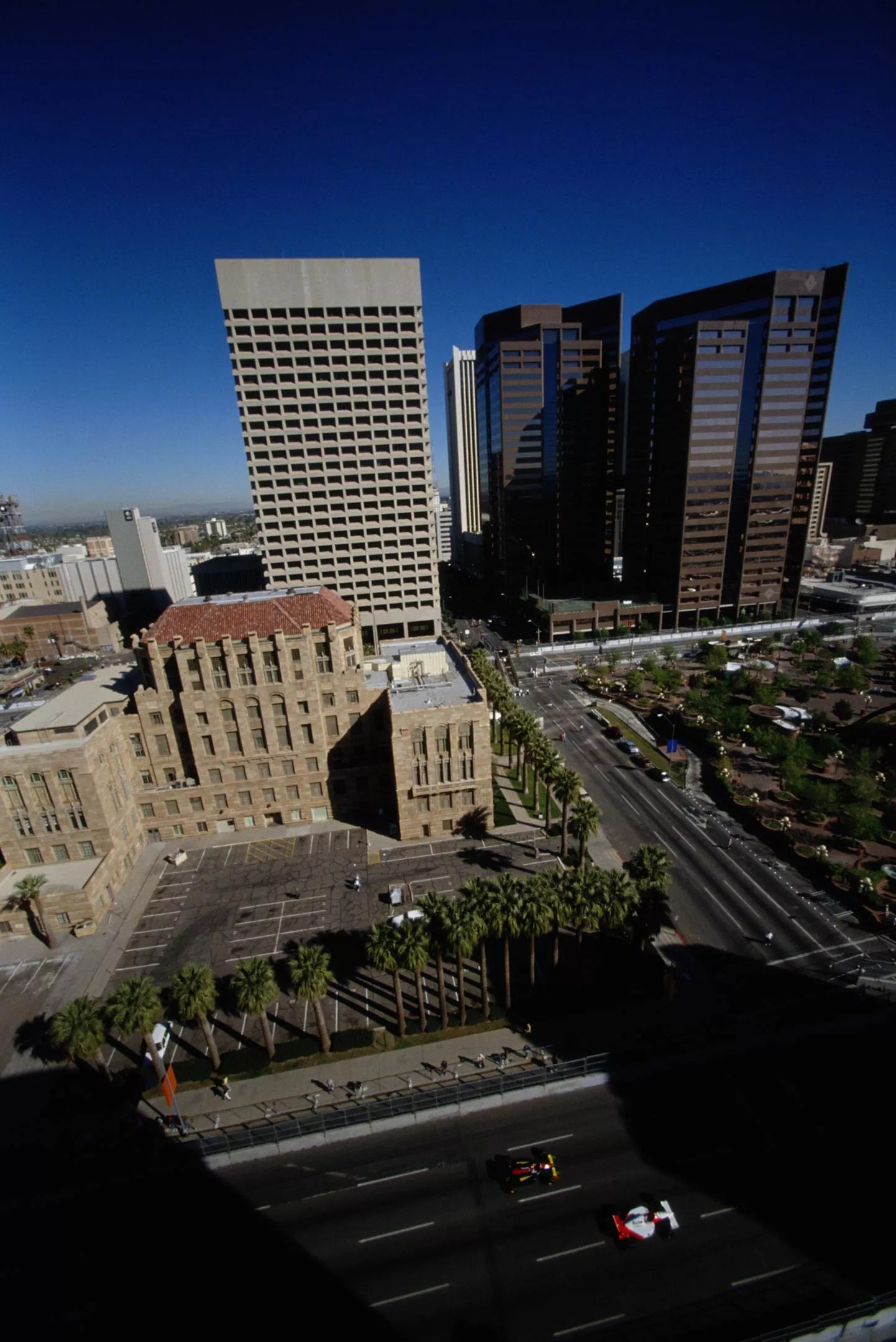
A practice race for the United States Grand Prix in Phoenix in 1991.
Pascal Rondeau/Allsport/Getty Images
This 1991 photo was taken during practice for the Iceberg United States Grand Prix. That’s Ayrton Senna and Aguri Suzuki zipping by the old courthouse, with One and Two Renaissance Square – completed in 1986 and 1990, respectively – and 100 West Washington in the background. To the right of the old courthouse is Patriot Square Park, which has since been replaced by CityScape.
2000s
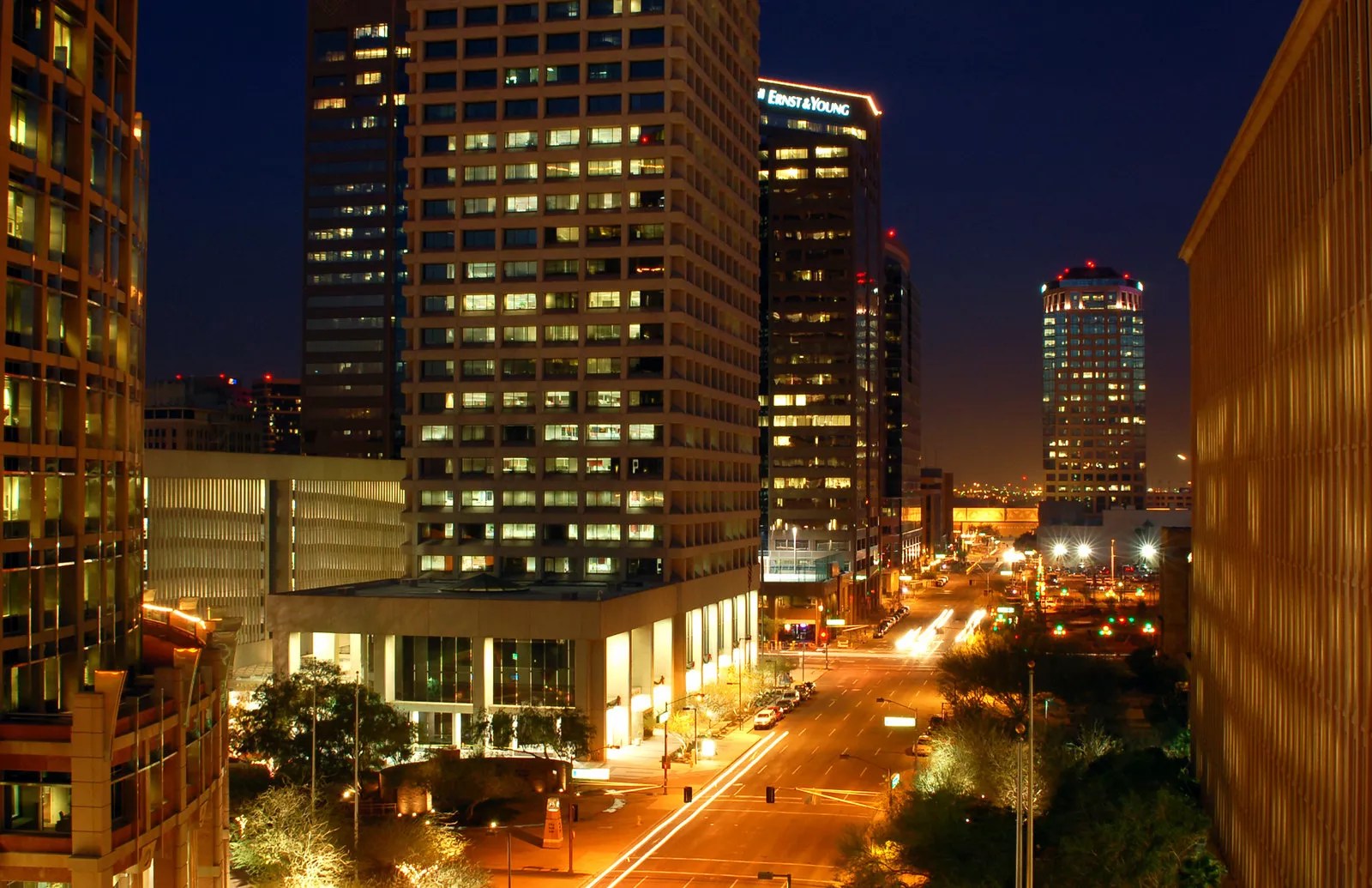
Phoenix in 2005.
Garry Wilmore/Flickr/CC BY-NC-SA 2.0
Looking eastward down Washington Street in 2005. Patriot Square Park is beyond the building on the right.
2010s
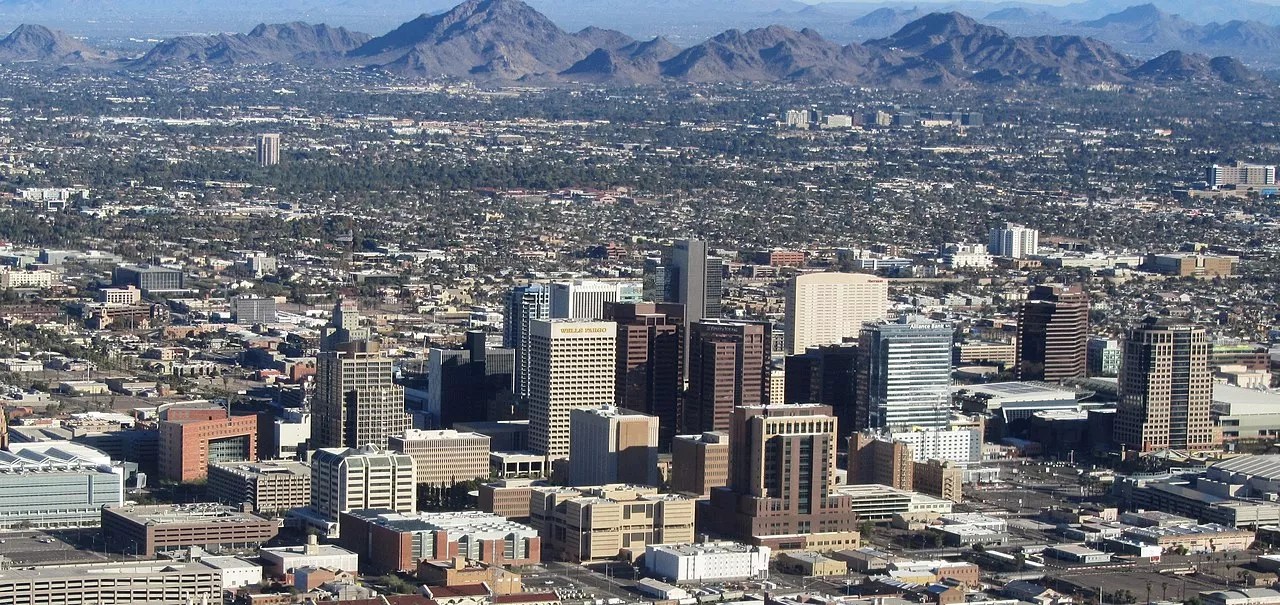
Phoenix in 2011.
Melikamp/Wikimedia Commons/CC BY-SA 3.0
We get our first glimpse of what’s now known as PHX Arena at the far lower-right of the frame in this 2011 photo, even though the building was constructed in 1992. First known as America West Arena, the home of the Phoenix Suns was known as the US Airways Center at the time of this shot. Phoenix in 2012. Alan Stark/Flickr/CC BY-SA 2.0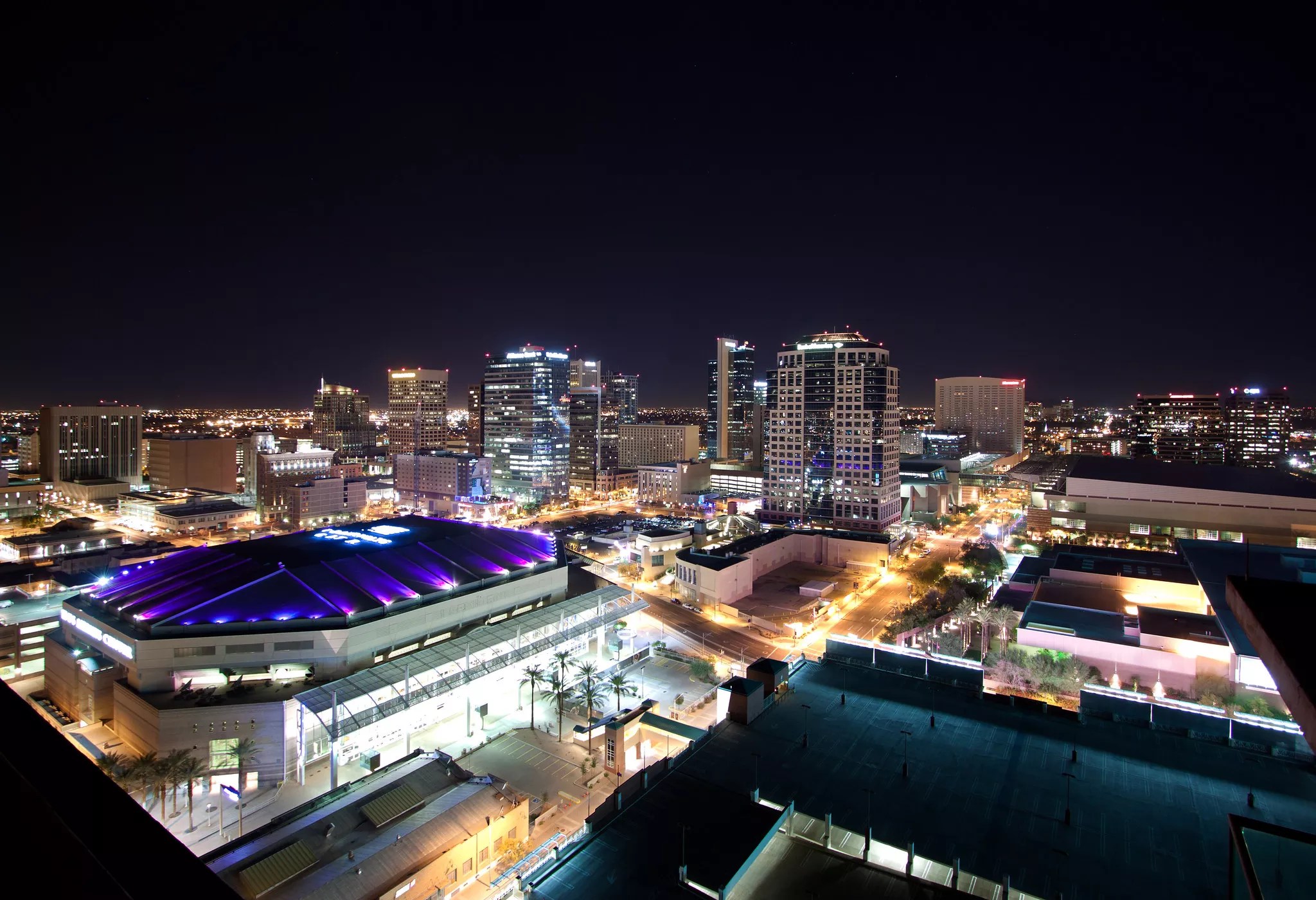
A fuller view of the then-US Airways Center, taken in 2012. Bank of America Tower, completed in 2000, sits a block north.
2020s

Phoenix in 2022.
prayitno3063@gmail.com/Flickr/CC BY 2.0
Phoenix in 2025. Dee Liu/Getty Images
Phoenix in 2022. Nestled in the middle is Luhrs Tower. When it was finished in 1924, it was the tallest building in Phoenix. A century later, it’s dwarfed by the bigger – and glitzier – skyscrapers that now dominate the Phoenix skyline, a signpost of how much the city has grown.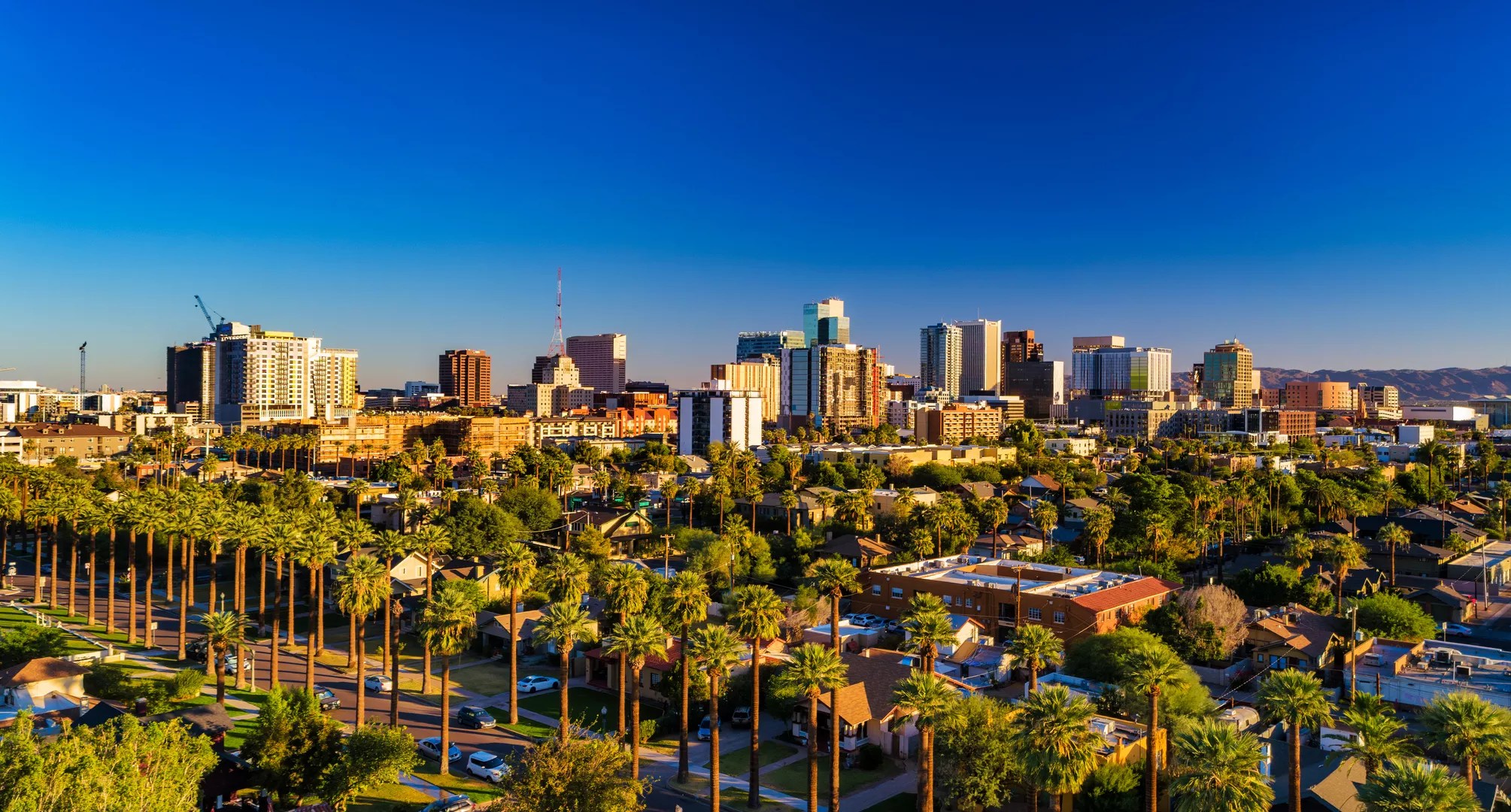
Looking into downtown from Portland Street to the northwest, we can see the Westward Ho building and Chase Tower among the many apartment buildings that have come to populate the city center. To the left, ever-present construction cranes hint at skyline changes yet to come.